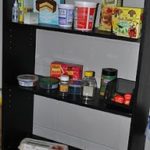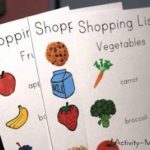Cash Registers Help Explore Math
On Monday, I wrote about cash registers as a classroom tool that can support early money concepts. Cash registers, themselves, are not exactly math manipulatives, but they can be used to support the use of math manipulatives like money.
Using the cash register in the house keeping area makes a lot of sense if you have set up this area as place where money might actually exchange hands such as grocery store, a bank, a post office, a restaurant, or a beauty salon. Make sure you mark the different items that are for sale with simple price tags so that children can begin to associate the price number with the money. If you don’t want to permanently mark your items, you can create small price tags on strings that can be tied to the objects while the housekeeping area is set up this way.
Say, for example, you create a grocery store in your program. Set up the shelves with all of the pretend food and put price tags on everything. Have the shopping carts ready and put the cash register on a table for “check out”. Be sure to have shopping bags available so that children can bag their groceries. It will make the most sense if the prices are in round numbers like $1 or $5 rather than $2.99 or $5.25.
 I also like the idea of creating “shopping lists” so the children can also make the connection between writing things down and reading them later. These are nice and easy to make.
I also like the idea of creating “shopping lists” so the children can also make the connection between writing things down and reading them later. These are nice and easy to make.
Be sure to have wallets or purses with the pretend money inside so that children can spend their money at the store.

cash registers were one of my favorite tools for counting.